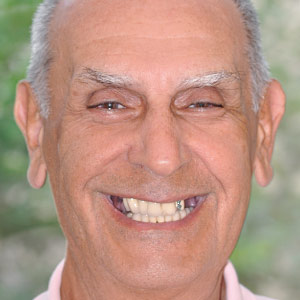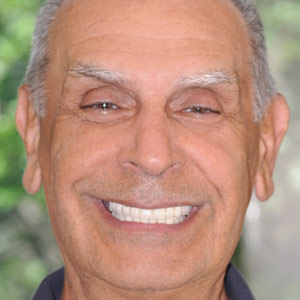New Teeth in One Day
How Dental Implant Tooth Replacements Reverse The Aging Process
(Continued)
The Process — In A Nutshell
Starting Place — The dentist takes records of your existing condition, whether you still have teeth or are wearing a denture, to determine various factors. These include how long the teeth should be, where the bite should be and how much lip and facial structure support is needed.
Diagnostics — CT scans, short for computed tomography (“tomo” – slice; “graph” – picture) produce 3-D pictures of the jawbone, including the position of the teeth to be replaced. These scans provide critical information about a person's anatomical structures (including bone, sinuses and nerves) and the ideal location for the implants.
Planning — Using computer simulation, the implants are digitally positioned in the jawbones in appropriate locations to optimally support the replacement teeth. This also allows for the fabrication of a surgical template if needed.
Precision Surgery — Surgery can be done simultaneously including tooth extractions, bone shaping, and implant placement. Skill, experience and meticulous planning are needed, particularly if the person has had significant bone loss.
Temporary Teeth — Temporary acrylic replacement teeth are attached directly to the implants via abutments — connectors that allow solid attachment to the implants. These teeth are considered temporary and are needed to facilitate initial healing; they will later be removed and replaced with permanent ones.
Healing — The temporary teeth stay in the mouth approximately 3 months until healing is completed. During the first 6-8 weeks of healing, it's a good idea to “go easy” on the new teeth, avoiding chewy or tough foods. Because implant surgery is very precise and well-planned, people generally have little post-operative discomfort and begin functioning with their new temporary teeth almost immediately.
Permanent Teeth — When the process of osseo-integration is completed, the dentist removes the temporary teeth replacing them with the permanent ones. They are generally made of stronger, more durable materials and fit the healed gum tissues more precisely. The new permanent teeth will function just like natural teeth and look beautiful, too!
The Serious Consequences Of Tooth Loss
Tooth loss has some serious consequences — particularly for older people, who are more likely to be missing teeth. When you lose teeth you also lose the bone that supported the teeth. This bone atrophies once it is no longer needed to support teeth. After the top layer of tooth-supporting bone is lost, the bone beneath it — the jawbone proper — also begins to resorb (melt away).
This leads to some serious aesthetic and functional problems, particularly in completely edentulous (toothless) people. With loss of jawbone mass, the jaws over-close, leading to a shortening of the lower third of the face known as “bite collapse.” The cheeks and lips, which are no longer supported by the teeth, become hollow. Someone undergoing this kind of breakdown loses self-confidence, feels older and can become withdrawn and avoid social situations. No one wants to kiss someone with no teeth or flopping lips!
 |
| This person had failing upper and lower natural-tooth-supported bridges. |
 |
| New, implant-supported upper and lower fixed dentures restore his smile. |
A large number of people who are aware that they are losing their teeth often fight to save them even though they may be painful, loose, infected or unsightly. But now, treatment options for replacing all of the teeth have improved dramatically. In fact they're so good that people should consider implant-supported permanent teeth replacements instead of suffering with bad teeth, poor aesthetics and limited function.
A New Reality
Improvements in implants now permit people who previously couldn't have implant dentistry, because of poor bone (quality or quantity) or expense, to get treatment. Similarly, since implant and restorative dentistry have improved so much, we can now use fewer implants to replace teeth compared to recommendations made only a few years ago.
Fortunately, as a result of continued research, development of diagnostic tools and innovative treatment, predictable success is now a reality in many challenging dental situations. For that to happen, though, you need a well-coordinated team of highly trained dental professionals: an implant surgeon (oral surgeon, periodontist or general dentist with appropriate training), a restorative dentist (general dentist or prosthodontist) and a laboratory technician. Just like a wedding, a lot of planning and coordination are necessary to make the big event a success. Likewise, having all the elements in place beforehand provides a sure way to get new teeth in just one day.


